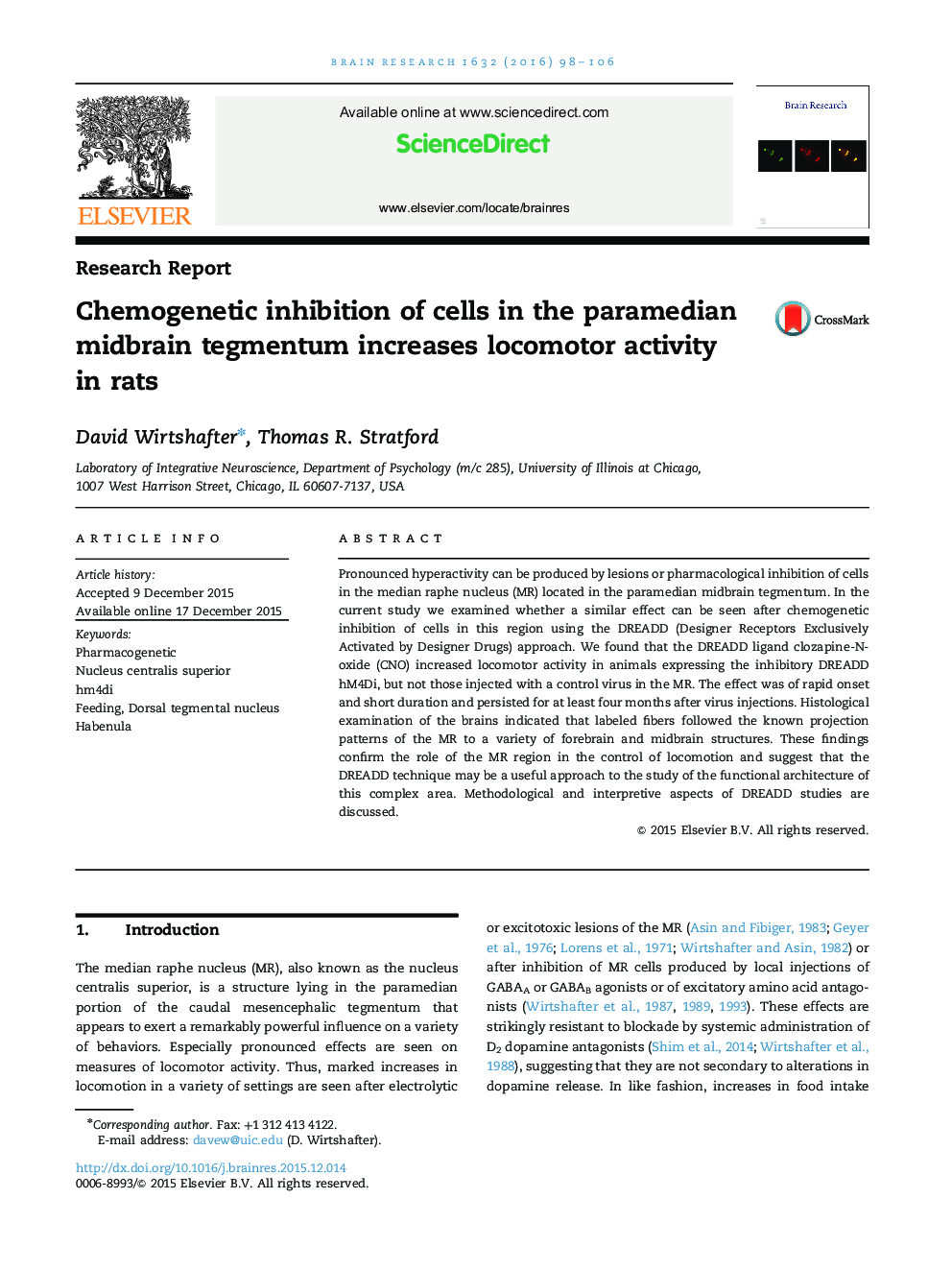| Article ID | Journal | Published Year | Pages | File Type |
|---|---|---|---|---|
| 4323697 | Brain Research | 2016 | 9 Pages |
•We examined the usefulness of DREADD technology in the median raphe system.•Chemogenetic inhibition of median raphe neurons increases locomotor activity.•Chemogenetic inhibition of median raphe neurons increases food intake.•The time course of the effects indicates rapid onset and short duration.•DREADD allows for the precise localization of projections from the injection site.
Pronounced hyperactivity can be produced by lesions or pharmacological inhibition of cells in the median raphe nucleus (MR) located in the paramedian midbrain tegmentum. In the current study we examined whether a similar effect can be seen after chemogenetic inhibition of cells in this region using the DREADD (Designer Receptors Exclusively Activated by Designer Drugs) approach. We found that the DREADD ligand clozapine-N-oxide (CNO) increased locomotor activity in animals expressing the inhibitory DREADD hM4Di, but not those injected with a control virus in the MR. The effect was of rapid onset and short duration and persisted for at least four months after virus injections. Histological examination of the brains indicated that labeled fibers followed the known projection patterns of the MR to a variety of forebrain and midbrain structures. These findings confirm the role of the MR region in the control of locomotion and suggest that the DREADD technique may be a useful approach to the study of the functional architecture of this complex area. Methodological and interpretive aspects of DREADD studies are discussed.
